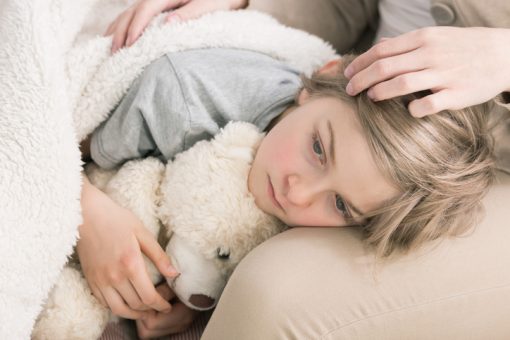 As a parent, it can be heartbreaking to see your child sad or upset, even if it is momentary. Most children will go through all stages of emotions but when your child is sad for the majority of the time, this can mean that something is troubling them and there is a bigger underlying issue causing this sadness. Children and teenagers will often not tell their parents why they appear sad and may even exclaim, “everything is fine”, but as a parent, you know when something is bothering your child. Children and teenagers are deeply affected by changes and transitions in life such a move, changing schools, a divorce, or a new sibling. They may act out as a way to express their feelings about a recent transition in their lives. In the absence of a new transition, children and teenagers may appear sad because they are struggling with a mental illness such as depression which is characterized by feelings of marked sadness, guilt and loss of interest. Having a child that is sad all the time is not normal and although it can be difficult to differentiate between normal teenage growing pains and depression, recognizing the signs and symptoms of depression and being aware of any major life transitions can help your teenager overcome whatever it is they are experiencing.
As a parent, it can be heartbreaking to see your child sad or upset, even if it is momentary. Most children will go through all stages of emotions but when your child is sad for the majority of the time, this can mean that something is troubling them and there is a bigger underlying issue causing this sadness. Children and teenagers will often not tell their parents why they appear sad and may even exclaim, “everything is fine”, but as a parent, you know when something is bothering your child. Children and teenagers are deeply affected by changes and transitions in life such a move, changing schools, a divorce, or a new sibling. They may act out as a way to express their feelings about a recent transition in their lives. In the absence of a new transition, children and teenagers may appear sad because they are struggling with a mental illness such as depression which is characterized by feelings of marked sadness, guilt and loss of interest. Having a child that is sad all the time is not normal and although it can be difficult to differentiate between normal teenage growing pains and depression, recognizing the signs and symptoms of depression and being aware of any major life transitions can help your teenager overcome whatever it is they are experiencing.
Working to overcome instability in the home
Research has shown that children and teenagers do best in a stable home where they know what to expect. They are happiest when they feel safe at school, in their home and in their relationships. Children react to change in many ways. It is not uncommon for your child to become extremely sad or go into isolation after a major transition has occurred. A change in childcare such as switching daycares or schools, a move, a family death, a new sibling, a divorce or new marriage or even a change in a parent’s work schedule can result in a child feeling insecure and unstable which can result in a change in their behavior. Your child may feel like they are being rejected, isolated or left behind but they do not know how to verbalize these thoughts and feelings so instead they use their emotions to react. As a parent, it is important to communicate to your child before any transition occurs and explain to them why a change is being made and what they should expect in the future.
Always make sure to ask your son or daughter if he or she is okay and if there is anything they would like to talk about and never try to force them to share their thoughts and feelings with you. A small transition to you may be a major transition for your son or daughter and making sure you are always checking in with their emotions is extremely important. If you feel that your child’s sadness is not improving after a transition or a change it may be wise to seek outpatient therapy as your child may be experiencing a mental health disorder such as adjustment disorder, grief reaction or a mood disorder such as depression.
Recognizing depression in your son or daughter
Chronic sadness and loneliness may be the first signs of depression in your child. While many children and teenagers experience moodiness and growing pains, depression goes beyond temporary changes in mood and behavior and can impact every aspect of your child’s life. Depression is a mood disorder that commonly presents in teenagers and can be treated on an outpatient basis with medication and psychotherapy. The following are signs and symptoms associated with depression:
- Sadness or hopelessness
- A decline in school performance
- Social isolation
- Changes in eating patterns
- Changes in weight
- Sleep disturbances
- Loss of interest in activities
- Restlessness and agitation
- Feeling of guilt
- Difficulty concentrating
- Tearfulness or frequent crying
